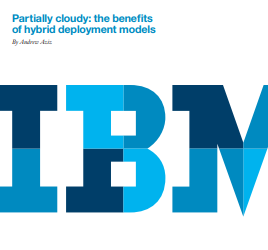Partially cloudy: the benefits of hybrid deployment models
Partially cloudy: the benefits of hybrid deployment models
 Financial institutions have traditionally faced stark choices with respect to the deployment of their risk solutions. If their desire was for configuration flexibility and transparency into the modeling and data workflow, they had been forced to bear all the potentially high costs associated with an on-premise implementation. In contrast, if their desire was to avoid the costs of data management, hardware and infrastructure support, they had been forced to accept the “Black box” implications of an on-cloud solution. Of course, depending on the specific business requirements of individual firms, either of these extreme options may be quite appropriate.
Financial institutions have traditionally faced stark choices with respect to the deployment of their risk solutions. If their desire was for configuration flexibility and transparency into the modeling and data workflow, they had been forced to bear all the potentially high costs associated with an on-premise implementation. In contrast, if their desire was to avoid the costs of data management, hardware and infrastructure support, they had been forced to accept the “Black box” implications of an on-cloud solution. Of course, depending on the specific business requirements of individual firms, either of these extreme options may be quite appropriate.
Financial institutions may sometimes prefer a full on-premise deployment. As an example, a hedge fund trading in complex structured products may have acquired a great deal of market intellectual property (IP) by trading in this asset class and, thus, desires full configuration flexibility and transparency over the risk factor and product modeling processes underlying their risk analytics. In contrast, other financial institutions may prefer a full on-cloud solution. For example, a pension plan holding generic securities or other more opaque products may be quite happy with standardized modeling choices, and look to the cloud for its inherent low cost of ownership benefits.

